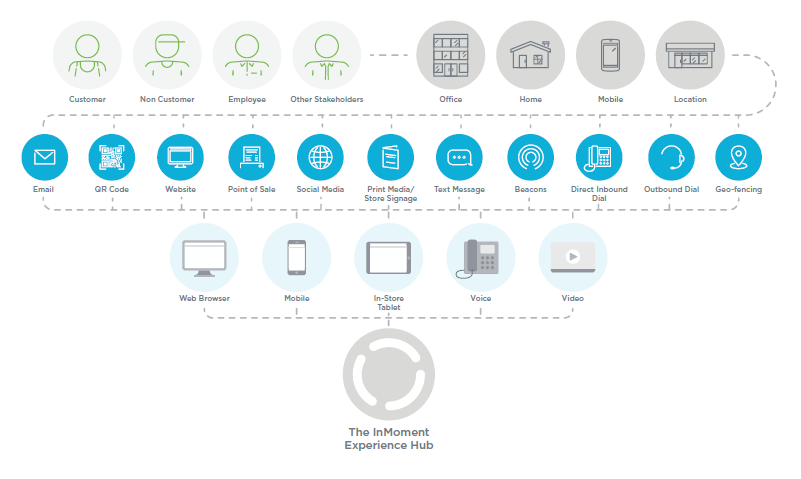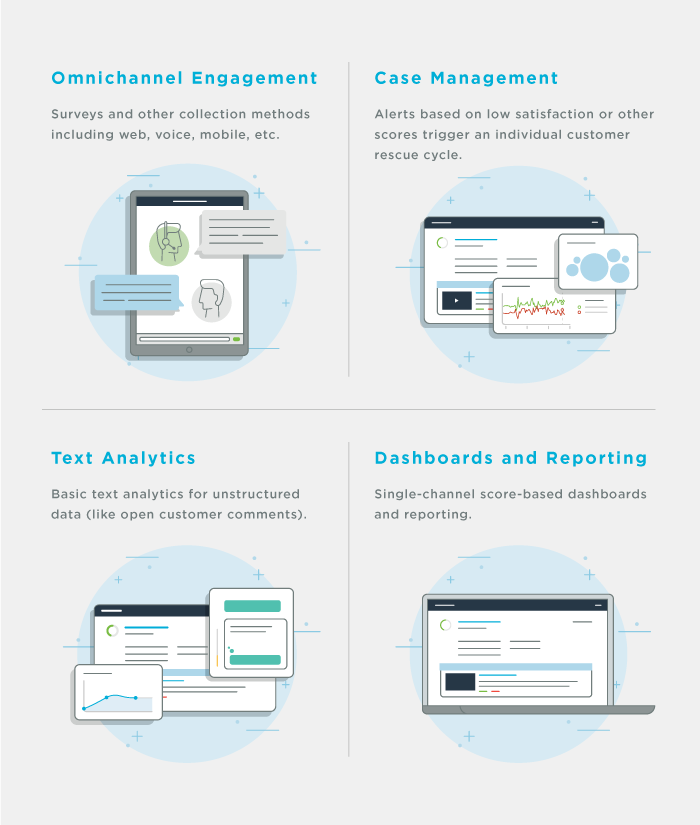Thanksgiving is almost here! That means a few different things to me—family, turkey, pie, more pie and of course, football!
I love watching football. I have season tickets to my alma mater. Is there a game on TV? I don’t care who’s playing—I’ll watch. It takes 3 to 4 hours to watch an entire football game, but surprisingly the ball is only in play for 11 minutes of that time! The average play lasts between 4 to 6 seconds.
Yet despite that fact, coaches and players spend countless hours preparing for those 11 minutes of truth. Even after the final play, they break down the film and assess what worked and what didn’t and then incorporate their analysis into the game plan for next week.
While it may seem absurd to think so much preparation and reaction goes into only 11 minutes, coaches and players understand something very important: because so much rides on those 11 minutes, the preparation and analysis has to be done. They can’t just show up and hope everything will work out.
Customer experience is no different. In reality, a customer might be in your store or restaurant for an hour or so, but your team only has a few moments to delight your customer. While those moments of truth are critical, the customer is won or lost long before those few service interactions.
This idea is what I call the intersection of customer service and customer experience. Bruce Jones, Senior Programming Director at the Disney Institute says it best:
“The key learning here is that customer experience moves us beyond the traditional definition of customer service—those individual moments when employees are providing direct service to customers. It is also about the bigger picture of what happens before and after these service interactions.”
An elevated customer experience requires a great deal of work both before and after the customer interacts with your brand. Here are three key elements for your brand to invest in so that you can empower your team to own the moments of customer service.
Employee-Customer Parity
To your customers, your frontline employees are your brand. The sales associate, the waitress, the cashier, the call center agent—they all represent your brand in their direct interactions with your customers.
I have heard several leading brands say something to the effect of “the customer experience cannot exceed the employee experience.”
Because your frontline employees are directly connected to your customers, take the time to listen to them and understand how engaged they are in the workplace.
According to Temkin Group’s 2017 Employee Engagement Benchmark Study, customer experience leaders have 60% more engaged employees.
Engaged employees have a heightened level of ownership such that they extend their best efforts for the success of the organization, its employees, and themselves. They intend to stay, they love their job, they’re inspired, and they advocate for the brand.
These are the employees your brand wants interacting with your customers.
It’s imperative to listen to your employees along the different touch points of their employment life cycle. Listening just once a year to your employees is not enough.
Your employees are an excellent source of insight into the customer experience. In fact, 66% of CX professionals said that employees are the top source of actionable insights about the customer experience.
At one restaurant brand, as servers would come to work for a weekend shift, it became a competition and race to grab the crab forks and stash them in your apron since there were only a limited number of these forks. The servers realized guests wouldn’t complain if they had a crab fork when they ordered crab but would be bothered if they had to use a regular fork. But if you weren’t able to seize the forks before another server did, your customers would suffer.
If this brand could have listened to the employees and understood this issue, they could have easily purchased more forks to ensure all their customers had the necessary utensils.
Forrester Research calls this type of feedback Voice of Employee which it defines as “any feedback from employees or partners that pertains to their ability to deliver great customer experience.”
Listening to your employees will provide you with a more holistic view of your customer experience and allow to take action to that will elevate both the employee and customer experiences.
All this investment is done before and after the customer visits so that your frontline employees are empowered to deliver on the moments of customer interaction.
Advanced Analytics
Most brands have an abundance of data, probably more than they know what to do with. What brands really need is better ways to understand all the data they have, especially all their customer experience data.
Gone are the days of a brand needing just a score—CSAT, OSAT, NPS. They need to know what to do to move the needle and improve those scores, ultimately driving revenue and profit.
Unstructured feedback or comments are the key to allowing brands to move beyond a score to really understand the story behind the score. Industry leading text analytics built on a natural language processor will allow you to quickly identify the stories and themes associated with your brands scores.
Text analytics enable your brand to move from “Customer satisfaction scores went down last quarter, we’ll work harder” to “Customer satisfaction scores went down last quarter due to being out of stock of key promotional products during the weekend. We will increase the inventory appropriately.”
A story is infinitely more valuable than a score.
Not only can advanced analytics give you the stories you need, but they can also monitor and detect anomalies and then alert your team on a regular basis to the impact for positive or negative. Being able to quickly sort through customer feedback and identify where, when, and why these issues are happening creates the opportunity to take corrective action and keep the issues from escalating.
Imagine being able predict the needs, wants, and actions of your customers. What if you could predict the point at which is customer is most likely to leave your brand and then proactively reach out to them and keep them loyal to your brand? The finance industry has used predictive analytics in forecasting for years. Now similar predictive models are a part of customer intelligence. These models can forecast risk, churn/attrition and much more. These predictive analytics can be applied to large customer segments or down to an individual customer.
In order to win the customer, you need analytics that will make sense of all your data and help you create a game plan that will lead to continued success.
Creating a Customer-Centric Culture
To be a truly customer-centric brand, customer experience should be a priority for the whole company. From the CEO down to the hourly employee. From the finance and legal department to the custodial team. You should be able to create a line of sight from every role in your company to the customer. Everyone’s role has an effect on the customer and they need to know that and be aware of it.
I know a brand that made the conscious decision several years ago that their customer metrics would be just as important to their brand as their financial and sales metrics. Customer metrics are discussed regularly at every level in every meeting. Rewards are given for both financial performance and customer experience performance.
As a result of this new mind set, this brand has seen tremendous improvement in customer experience metrics leading to sales increase, unit growth and higher stock price.
Creating such a culture starts with showing your organization what you can achieve when you focus on the customer. A simple but powerful business case can prove locations with elevated customer experience have higher unit sales. You can prove the lifetime value of a customer and why it’s important to keep them coming back to your brand because that guest is worth far more than their sale that day. You can illustrate the revenue at risk when guests tell you they’re not coming back because of a negative experience.
You should also celebrate your customer experience successes. Employees should be recognized for the difference they make with their customers. This recognition can take place regularly at individual locations and should take place at area, regional, divisional and even national levels. Customers are leaving you positive feedback about your team—use it to celebrate and recognize.
Also, don’t shy away from negative feedback, it’s a gift! Negative feedback provides opportunity to coach your team. You can also use the negative feedback to reach out to the customer and close the loop and let them know you’re listening and fixing the problem. A customer who has had a negative experience but was successfully recovered is actually more loyal to your brand!
Employees should be empowered and have the freedom to act in the best interest of the customer. They shouldn’t feel restricted by corporate rules and policies.
That being said, building a customer-centric culture is not easy.
‘‘Maintaining a culture is like raising a teenager,’’ says Ray Davis, President and CEO of Umpqua Bank, a Pacific-Northwest-based U.S. retail bank that’s consistently top rated for service. ‘‘You’re constantly checking in. What are you doing? Where are you going? Who are you hanging out with?”
Noted customer experience consultant Micah Solomon added, “And, sometimes, you have to use some tough love when that teenager is acting up in ways that don’t support the culture you’re working to build.”
Ultimately, a company with a customer-centric culture will allow your team to own the moments of service interaction with your customers and keep them coming back and spending more money.
As you continue to elevate the customer experience within your brand, remember that you only have a few moments to win a customer over, but you need hours, weeks, months, and even years to prepare for and to analyze those moments. You can do this by investing in and listening to your employees, using advanced analytics to understand trends, stories, and predict outcomes, and creating a customer-centric culture at all levels within your brand.













